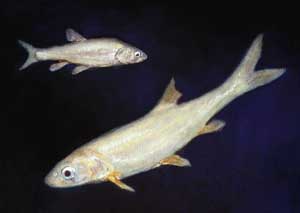
by Deep Green Resistance News Service | Sep 1, 2012 | Biodiversity & Habitat Destruction
By Zoological Society of London
One fifth of the world’s invertebrates may be heading for extinction according to ‘Spineless’, a report published today (Friday 31st) by the Zoological Society of London (ZSL), in conjunction with IUCN and the IUCN Species Survival Commission.
Digging up earthworms, chasing butterflies and collecting clam shells could become a thing of the past if enough isn’t done to protect invertebrates. And if they disappear, humans could soon follow. These critters form the basis of many of the essential benefits that nature provides; earthworms recycle waste nutrients, coral reefs support a myriad of life forms and bees help pollinate crops.
More than 12,000 invertebrates from the IUCN Red List of Threatened Species were reviewed by conservation scientists who discovered freshwater species to be under the highest risk of extinction, followed closely by terrestrial and marine invertebrates. The findings from this initial group of global, regional and national assessments provide important insight into the overall status of invertebrates. Together they indicate that the threat status of invertebrates is likely very similar to that of vertebrates and plants.
Invertebrates are at risk from a variety of threats. Molluscs such as thick shelled river mussels suffer from pollution from agricultural sources and dam construction, which affects the quality of the water they live in. Crayfish such as the noble crayfish, are at risk from the impact of invasive species and diseases. What starts off as a local decline could lead to a global extinction, and recognising the growing pressures on invertebrates is critical to informing more effective conservation.
Dr. Ben Collen, head of the Indicators and Assessments unit at ZSL says: “Invertebrates constitute almost 80 per cent of the world’s species, and a staggering one in five species could be at risk of extinction. While the cost of saving them will be expensive, the cost of ignorance to their plight appears to be even greater”.
The highest risk of extinction tends to be associated with species that are less mobile and are only found in small geographical areas. For example, vertebrate amphibians and invertebrate freshwater molluscs both face high levels of threat – around one third of species. In contrast, invertebrate species which are more mobile like dragonflies and butterflies face a similar threat to that of birds, and around one tenth of species are at risk.
ZSL’s Director of Conservation, Professor Jonathan Baillie added: “We knew that roughly one fifth of vertebrates and plants were threatened with extinction, but it was not clear if this was representative of the small spineless creatures that make up the majority of life on the planet. The initial findings in this report indicate that 20% of all species may be threatened. This is particularly concerning as we are dependent on these spineless creatures for our very survival.”
Read more from Zoological Society of London: http://www.zsl.org/conservation/news/invertebrates-on-the-brink,993,NS.html

by Deep Green Resistance News Service | Aug 11, 2012 | Biodiversity & Habitat Destruction, NEWS
By US Geological Survey
From 1900-2010, freshwater fish species in North America went extinct at a rate 877 times faster than the rate found in the fossil record, while estimates indicate the rate may double between now and 2050. This new information comes from a U.S. Geological Survey study to be published in the September issue of the journal BioScience.
In the fossil record, one freshwater fish species goes extinct every 3 million years, but North America lost 39 species and 18 subspecies between 1898 and 2006. Based on current trends in threatened and endangered fish species, researchers estimate that an additional 53-86 species of freshwater fish may be extinct by the year 2050. Since the first assessment of extinct North American freshwater fishes in 1989, the number of extinct fishes increased by 25 percent.
“This study illustrates the value of placing current events into the context of deep geologic time, as rocks preserve an unbiased record of natural rates of processes before human activities began to alter the landscape, the atmosphere, the rivers, and oceans,” said USGS Director Marcia McNutt. “Freshwater fish are a good choice for analysis as their bones make clear fossil impressions, and their lake and river environments produce excellent stratigraphic sequences.”
The study’s author, Noel Burkhead, used an established method to compare the rate of extinction found in the fossil record with modern rates.
“Estimates of freshwater fish extinctions during the twentieth century are conservative, because it can take 20-50 years to confirm extinction,” said Burkhead, a research fish biologist for the USGS.
Extinction is a natural process, Burkhead explained, so examining its rate over a long geological timescale provides biologists with a benchmark for comparing current extinctions to background rate. The accelerated pace of extinction observed since the beginning of the twentieth century suggests human causes.
In North America, assessments of extinctions are conducted by the American Fisheries Society’s Endangered Species Committee, using categories to factor in a lag time since the last observation of the species. The study used the categories “extinct” (species not seen for 50 years or more), “possibly extinct” (not been seen for 20 years or more), and “extinct in nature.” All these categories require that searches for the missing fishes must have been made by knowledgeable biologists.
“It is extremely rare that the death of the last individual is documented by biologists,” said Burkhead, “although it can happen when a fish only is found in a specific spring or caldera, and it dries up. That’s what happened with five species of desert pupfishes and the Alberca silverside—the last known fish to go extinct in North America.”
The Alberca silverside was found only in the Alberca Caldera, Guanajuato, Mexico; it went extinct when the caldera temporarily dried up in August 2006.
Surprisingly, Burkhead reported that 90-96 percent of fish extinctions in the fossil record were not linked to the five well-known mass extinctions. Natural causes of fish extinction are linked to transitions in landforms and continental watercourses over time, but many twentieth century extinctions were caused by dams, channelization of rivers, water pollution, and other human-induced factors.
The background rate of extinction is based on the fossil record, which includes information on when ancient fishes lived and how long species survived in the geological past. Burkhead used data on fish extinctions from well-known paleontologist Steven M. Stanley at the University of Hawaii.
“Another cause of extinction can be a change in a fish’s food chain, which is what may have happened to the harelip sucker, a really cool fish that used to live in seven states throughout the Ohio River basin,” said Burkhead. “It was a snail-eating specialist with cleft lips that used to pluck snails off river bottoms and manipulate the snail in its mouth in order to suck out the snail’s soft parts, perhaps making little popping sounds. Sadly, snails are highly sensitive to excessive sedimentation and in the late nineteenth century, large amounts of topsoil were washing into rivers along with sewage and industrial effluents from cities. This likely caused snails to decline, which may have been what drove the fish to extinction.”
Declines in freshwater fishes are only the “tip of the iceberg” for freshwater ecosystems, with mussels and snails experiencing declines greater than that of freshwater fishes.
From US Geological Survey

by Deep Green Resistance News Service | Aug 2, 2012 | Biodiversity & Habitat Destruction, Mining & Drilling
By Jeremy Hance / Mongabay
Burning coal fuels climate change, causes acid rain, and spreads toxic pollutants into the environment, but now a new Greenpeace report warns that coal may also imperil the world’s biggest feline: the tiger. Home to world’s largest population of tigers—in this case the Bengal subspecies (Panthera tigris tigris)—India is also the world’s third largest coal producer. The country’s rapacious pursuit of coal—it has nearly doubled production since 2007—has pushed the industry into tiger territory, threatening to destroy forests and fragment the tiger’s already threatened population.
“Unfortunately for the tiger, its largest contiguous habitat—Central India—is also where most of India’s coal lies,” Ashish Fernandes, author of the report, told mongabay.com.
India is one of the bright spots in the global effort to save the tiger from extinction. The country now holds around 1,700 tigers, over half of the world’s population of wild tigers. Although India’s tiger population is generally considered to be in decline, there have been some local population increases giving hope that the country can turn around the situation. Yet the tiger still faces poaching and habitat loss, the latter which is likely to be exacerbated by open pit mining for coal.
“Several of India’s largest coalfields (such as Singrauli and Talcher) include forest areas adjoining Tiger Reserves, and where tigers are found. Coal mines are already eating into these areas, and with the ongoing expansion, this will worsen,” Fernandes says.The Bengal tiger, which is considered Endangered by the IUCN Red List, is the undisputed king in these forests, which in some cases also sports populations of leopard (Panthera pardus), Near Threatened; Asian elephant (Elephas maximus), Endangered; sloth bear, (Melursus ursinus), Vulnerable; sambar (Rusa unicolor), Vulnerable; and other non-threatened deer and antelope species.
Analyzes 13 Central Indian coal mines, in various stages of exploitation, the report finds that full open pit mining in these areas would destroy over a million hectares of forest. According to official data, 18 percent of these forests are known to be used by tigers, 27 percent by leopards, and 5.5 percent by elephants. In all, eight of India’s renowned Tiger Reserves will be impacted, potentially harming around 230 tigers or 13 percent of India’s total tiger population.
“India’s Protected Areas/Tiger Reserves are small by global standards, with few larger than 500 square kilometers. As such, if isolated, their tiger populations are not viable in the long term,” Fernandes explains. “Tigers, males in particular, roam large areas in search of mates, and this ensures genetic vibrancy. As young tigers mature, they also need to establish their own territories, or face conflict with dominant males. Corridors help aid this dispersal and ensure a healthy gene flow between different ‘source’ tiger populations.”
India is a signatory of an ambitious conservation plan to double wild tiger populations worldwide by 2022, a plan which was endorsed by all 13 tiger countries in 2010. Worldwide, tigers have been decimated by habitat loss, prey depletion, and hunting, now largely to feed the Chinese medicine trade. The great cats have been left with about 7 percent of their historical range, and already three subspecies have vanished for good.

by Deep Green Resistance News Service | Jul 24, 2012 | Mining & Drilling
By Andreea Campeanu / Agence France-Presse
Knee-deep in muddy water, a 10-year-old child and a woman with braided hair lean over a large sieve, washing earth and rocks, their eyes clenched against the filthy splashing water.
They are among the thousands of panners hoping to strike it rich on a recently discovered seam of sapphires, running through Madagascar’s newest national park created to protect the island’s famed lemurs and dozens of other rare species.
The 381,000 hectares (941,000 acres) of virgin rainforest of the Ankeniheny-Zahamena corridor officially became a protected area late last year. Then in April, sapphires were found.
“We had an invasion of illegal miners in this park, which is our most recent protected area”, says Angelo Francois Randriambeloson from the ministry of environment.
The park has 2,043 identified species of plants; 85 percent are found no where else in the world. There’s also 15 species of lemurs, 30 other mammals, 89 types of birds and 129 kinds of amphibians. And that’s just what’s been discovered so far.
But now among the park’s tall trees, a one-kilometre (half-mile) stretch of river valley has turned into a mudpit as thousands of Madagascar’s desperately poor people have thrown up makeshift homes of branches and plastic sheets, beaten by near-daily rains.
The vast Indian Ocean island is one of the poorest countries in the world, with 81 percent of the population living on less than $1.25 a day, according to the World Bank.
Sapphires present an irresistible lure of quick riches for the lucky, who say they don’t have to dig more than three metres (10 feet) to find large stones.
Madagascar is one of the world’s biggest sapphire producers, selling most to Sri Lanka and Thailand for cutting and polishing.
Reaching the mine takes two days of hard walking from the small town of Didy, the closest place reachable by bush taxi. Even getting to Didi is tough. It’s 300 kilometres from the capital, and less than a third of the distance is on paved roads.
The last 10 hours of the walk is through beautiful rain forest, climbing precipitous hills on barely perceptive boggy paths.
Morris, a 40-year-old aspiring miner, walked barefoot, carrying a heavy sack of rice so he would have food at the mine.
Most people spend just a few weeks here until they find one or more larger sapphires or rubies, some up to 10 grams.
“Here there are only two: blue sapphires and rubies. But there are more large ones,” said Dudu, a 35-year-old buyer.
But the government wants miners to leave the park.
“We are now forming a commission and we are trying to plan a way to send the people away from the mine,” said Randriambeloson. “As it’s a protected park, its soil also belongs to the Malagasy state.”
But people still go every day, in groups, to and from the mine. Some have nothing but the clothes they are wearing. Others carry bags of rice, noodles, powdered milk or even generators.
Water for washing is now hard to find, since the river is extremely dirty. There is no drinking water and not a lot of food. Informal eateries surrounded by mud and fallen branches are expensive.
“The place has changed, there are more people around. But there are no security problems, only sanitation ones,” Didy’s deputy mayor said.
The authorities in the capital Antananarivo sent in police to discourage people from mining, to little result so far.
“Once the miners are out, we will restore the damage done,” Randriambeloson vowed.
From Google News:

by Deep Green Resistance News Service | Jul 20, 2012 | Biodiversity & Habitat Destruction
John R. Platt recently examined the impacts of shark finning for his Extinction Countdown blog on Scientific American:
The appearance of a shark fin piercing the ocean surface is often seen as a sign of danger to humans. Even more dangerous to sharks is the sight of a shark fin floating in a bowl of soup.
Around the world, sharks are in crisis. Many species have suffered population declines of 90 to 99 percent in recent decades, mostly to feed the seemingly endless demand for the tasteless concoction known as shark fin soup, which is served to mark important occasions such as weddings and business deals in China and some other Asian communities. An astonishing 10.3 million kilograms of shark fins and shark fin–based products were imported into Hong Kong in 2011, according to statistics released last week by The Pew Charitable Trusts Environmental Group in the report, Navigating Global Shark Conservation: Current Measures and Gaps (pdf). The organization says Hong Kong imports about half of the world shark fin harvest.
The Pew group obtained these figures from the Census and Statistics Department of Hong Kong, but even they don’t tell the whole story. Previous research (pdf) has estimated the total worldwide shark fin catch to be three to four times what is legally reported. Because so much of the shark trade is illegal and carried out in the black market, the true total number of sharks killed each year is impossible to ascertain, but the Sea Shepherd Conservation Society and other organizations estimate it at more than 100 million. Another group, Shark Defenders, puts the annual average at 38 million, citing the same 2006 research that quantified the shark-fin trade.
Another hidden part of the story, according to the Pew report, is the types of sharks being caught. Many of the nations that allow shark fishing do not require good record-keeping and allow fishermen to log all of their catches simply as “sharks” rather than specific shark species. Some nations even report their take in extremely broad categories such as “sharks, rays, skates, etcetera,” so there’s no specificity to what their fishing fleets actually landed.
Read more from Scientific American: http://blogs.scientificamerican.com/extinction-countdown/2012/07/18/hong-kong-imported-10-million-kilograms-shark-fins/





